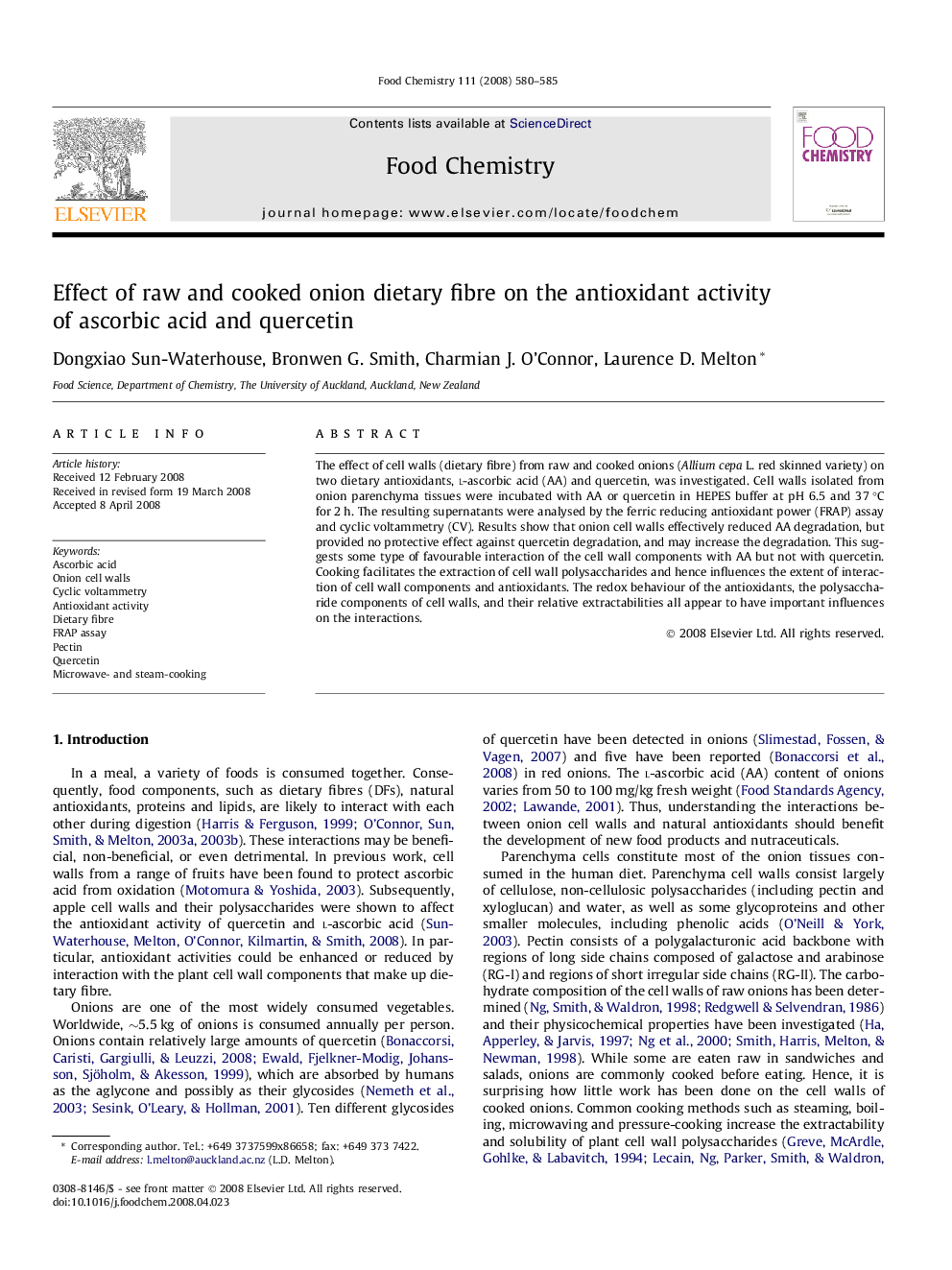| Article ID | Journal | Published Year | Pages | File Type |
|---|---|---|---|---|
| 1187918 | Food Chemistry | 2008 | 6 Pages |
The effect of cell walls (dietary fibre) from raw and cooked onions (Allium cepa L. red skinned variety) on two dietary antioxidants, l-ascorbic acid (AA) and quercetin, was investigated. Cell walls isolated from onion parenchyma tissues were incubated with AA or quercetin in HEPES buffer at pH 6.5 and 37 °C for 2 h. The resulting supernatants were analysed by the ferric reducing antioxidant power (FRAP) assay and cyclic voltammetry (CV). Results show that onion cell walls effectively reduced AA degradation, but provided no protective effect against quercetin degradation, and may increase the degradation. This suggests some type of favourable interaction of the cell wall components with AA but not with quercetin. Cooking facilitates the extraction of cell wall polysaccharides and hence influences the extent of interaction of cell wall components and antioxidants. The redox behaviour of the antioxidants, the polysaccharide components of cell walls, and their relative extractabilities all appear to have important influences on the interactions.
